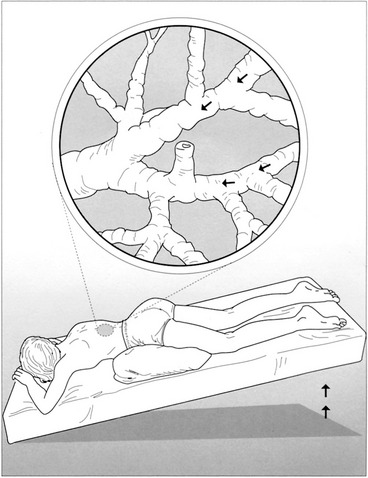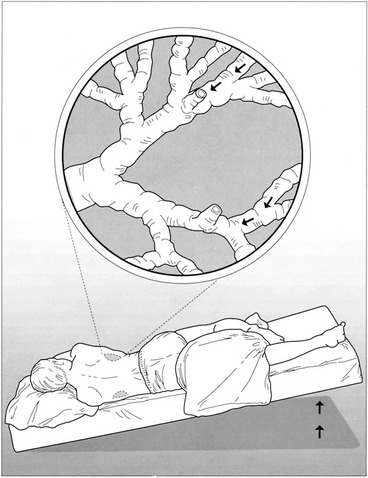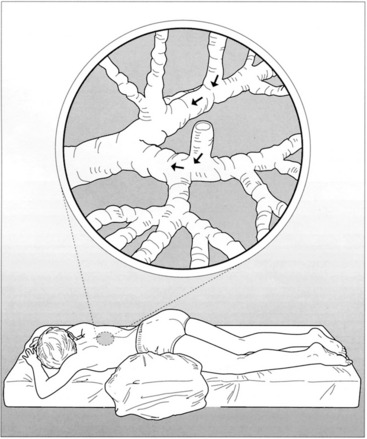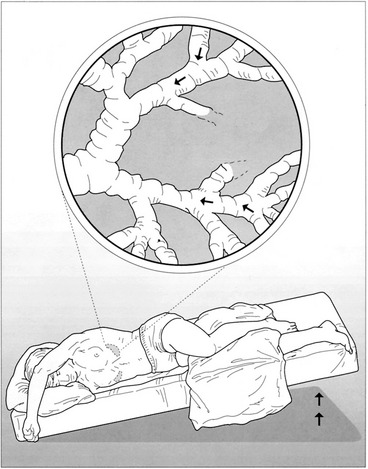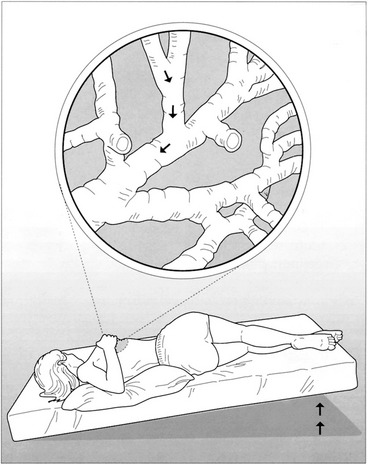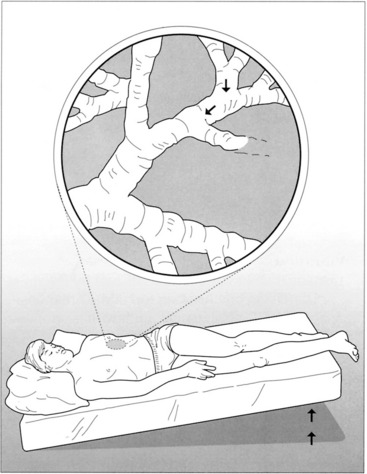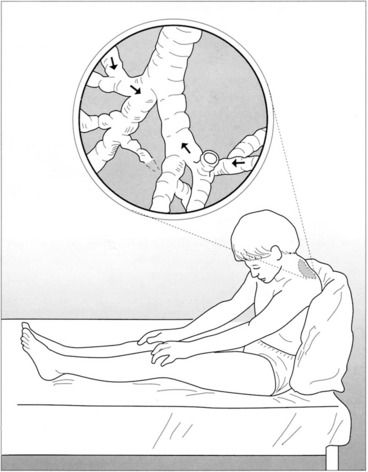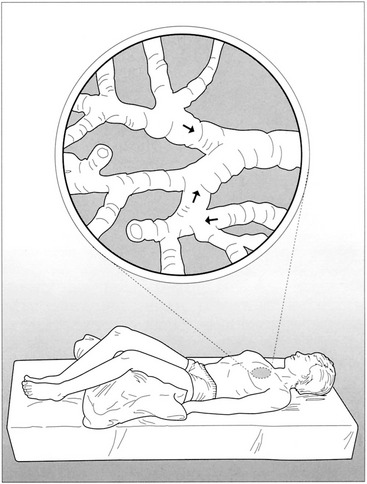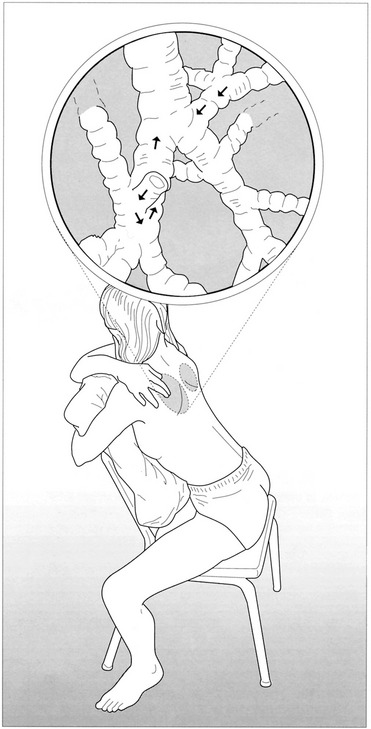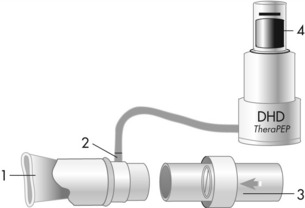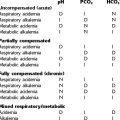CHAPTER 8 BRONCHOPULMONARY HYGIENE TECHNIQUES
PRETEST QUESTIONS
1. Postural drainage and percussion are not indicated in which of the following conditions?
2. In which of the following airway clearance techniques is the patient instructed to alter VT in three phases before a cough effort?
3. The respiratory care practitioner receives an order for postural drainage on a patient to mobilize secretions from the anterior segment of the right upper lobe of the lung. How should the patient be positioned for the lung to drain most effectively?
4. A 34-year-old patient using a 40% aerosol mask has right lower lobe pneumonia. He becomes short of breath and his SpO2 decreases from 96% to 89% when lying on his right side. What should the respiratory therapist recommend?
REVIEW
CRT Exam Content Matrix: IIA14a, IIIA1a-b, IIIC1a, IIIC4, IIIF1, IIIF2f1-2
II. OTHER BRONCHOPULMONARY HYGIENE TECHNIQUES
CRT Exam Content Matrix: IIA14b-c, IIIA1a-b, IIIC1d, IIIC4, IIIF2f1-2
RRT Exam Content Matrix: IIIA1a-b, IIIC1d, IIIC14
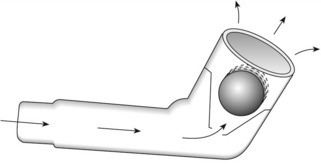
FIGURE 8-11 Flutter valve.
From Wilkins RL, Stoller JK, Kacmarek R: Egan’s fundamentals of respiratory care, ed 9, St Louis, 2009, Mosby.
POSTCHAPTER STUDY QUESTIONS
1. What is the most appropriate pressure range for PEP therapy?
2. What is the range of pressure used for flutter valve therapy?
3. What types of patients seem to benefit the most from intrapulmonary percussive ventilation?
4. Intrapulmonary percussive ventilation, flutter valve therapy, and PEP therapy may be alternatives for what other popular therapy?
5. List five complications of CPT.
6. To drain the posterior basal segment of the lower lobe of the lung, how should the respiratory care practitioner position the patient?

